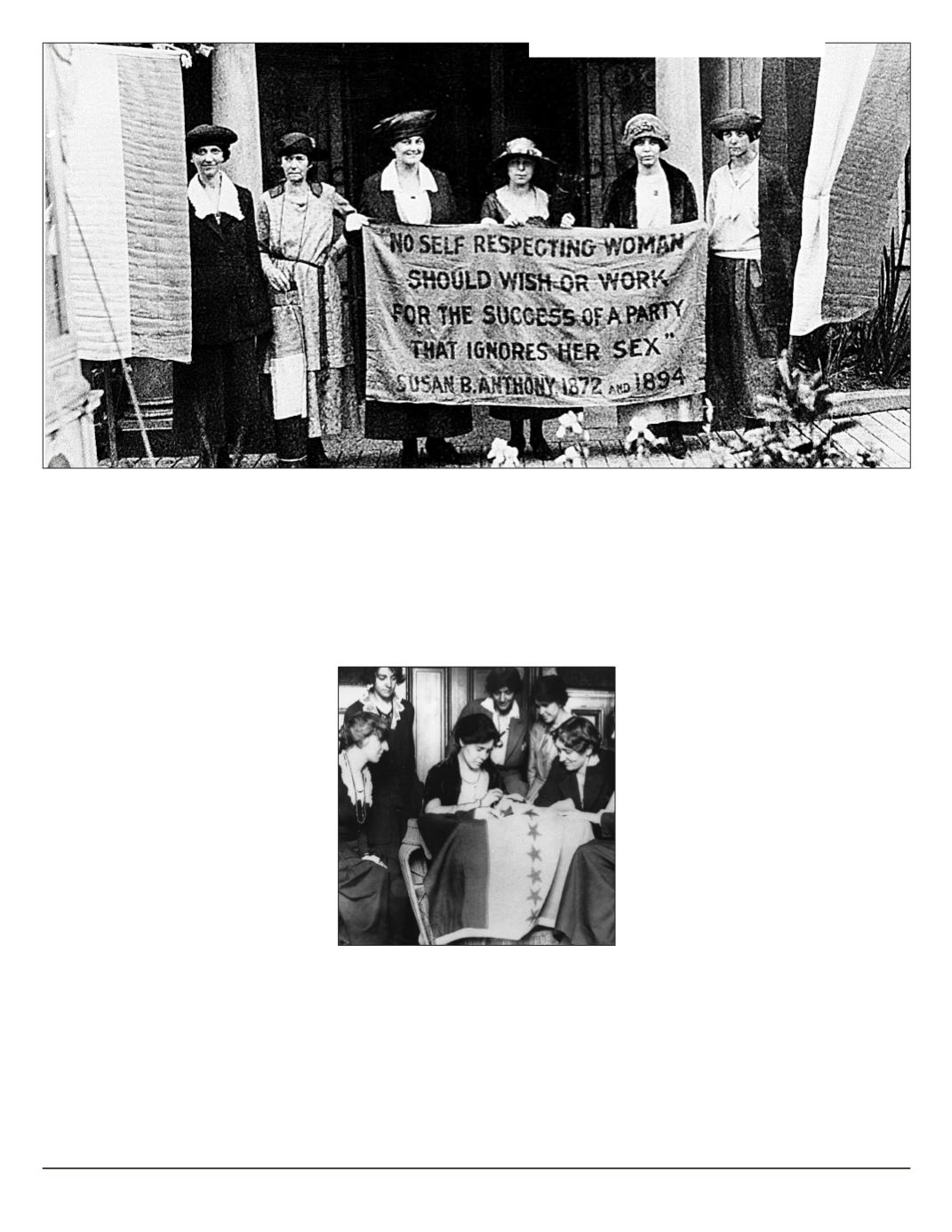

24 Time Lines
Chairwoman Alice Paul, second from left, and officers of the National Woman’s Party hold a banner with
a Susan B. Anthony quote in front of the NWP headquarters in Washington, D.C., June 1920. The suffrag-
ettes are ready for the G.O.P. convention to seek support for the ratification of the 19th Amendment grant-
ing women the right to vote. The other suffragettes are, Sue White, Mrs. Benigna Green Kalb, Mrs. James
Rector, Mary Dubrow and Elizabeth Kalb. (AP Photo)
Celebrating ratification of the women’s suffrage amendment, Alice Paul, seated second from left, sews the
36th star on a banner, in August of 1920. The banner flew in front of headquarters of the Women’s Party in
Washington of which Miss Paul was national chairperson. The 36th star represented Tennessee, whose
ratification completed the number of states needed to put the amendment in the Constitution. (AP Photo)
In Tennessee, it had sailed through
the Senate but stalled in the House
of Representatives, prompting thou-
sands of pro- and anti-suffrage ac-
tivists to descend upon Nashville. If
Burn and his colleagues voted in its
favor, the 19th Amendment would
pass the final hurdle on its way to
adoption.
That morning, Burn, who until that
time had fallen squarely in the anti-
suffrage camp, received a note from
his mother, that included the phrase:
“Hurrah, and vote for suffrage!”
She added, ‘Don’t keep them in
doubt. I notice some of the speeches
against. They were bitter. I have been
watching to see how you stood, but
have not noticed anything yet,” and
ended the missive with a rousing
endorsement of the great suffragist
leader Carrie Chapman Catt, implor-
ing her son to “be a good boy and help
Mrs. Catt put the ‘rat’ in ratification.”
During the vote, Burn still sport-
ed his red boutonniere but clutched
his mother’s letter. He said “aye” so
quickly that it took his fellow legis-
lators a few moments to register his
unexpected response.
The next day, Burn publicly ex-
pressed his personal support of uni-
versal suffrage, declaring, “I believe
we had a moral and legal right to
ratify.” But he also made no secret of
Miss Febb’s influence—and her cru-
cial role in the story of women’s rights
in the United States. “I know that a
mother’s advice is always safest for
her boy to follow,” he explained, “and
my mother wanted me to vote for rat-
ification.”
There is a Woman Suffrage Me-
morial in downtown Knoxville, Ten-
nessee, located in Market Square, to
honor state suffragists. The square
is listed on the National Register of
Historic Places.
The idea of women’s suffrage gained
prominence in the United States as
a result of the Seneca Falls Conven-
tion, held 30 years prior to the 1878
original drafting of the amendment.
100 Years Ago - The 19th Amendment


















